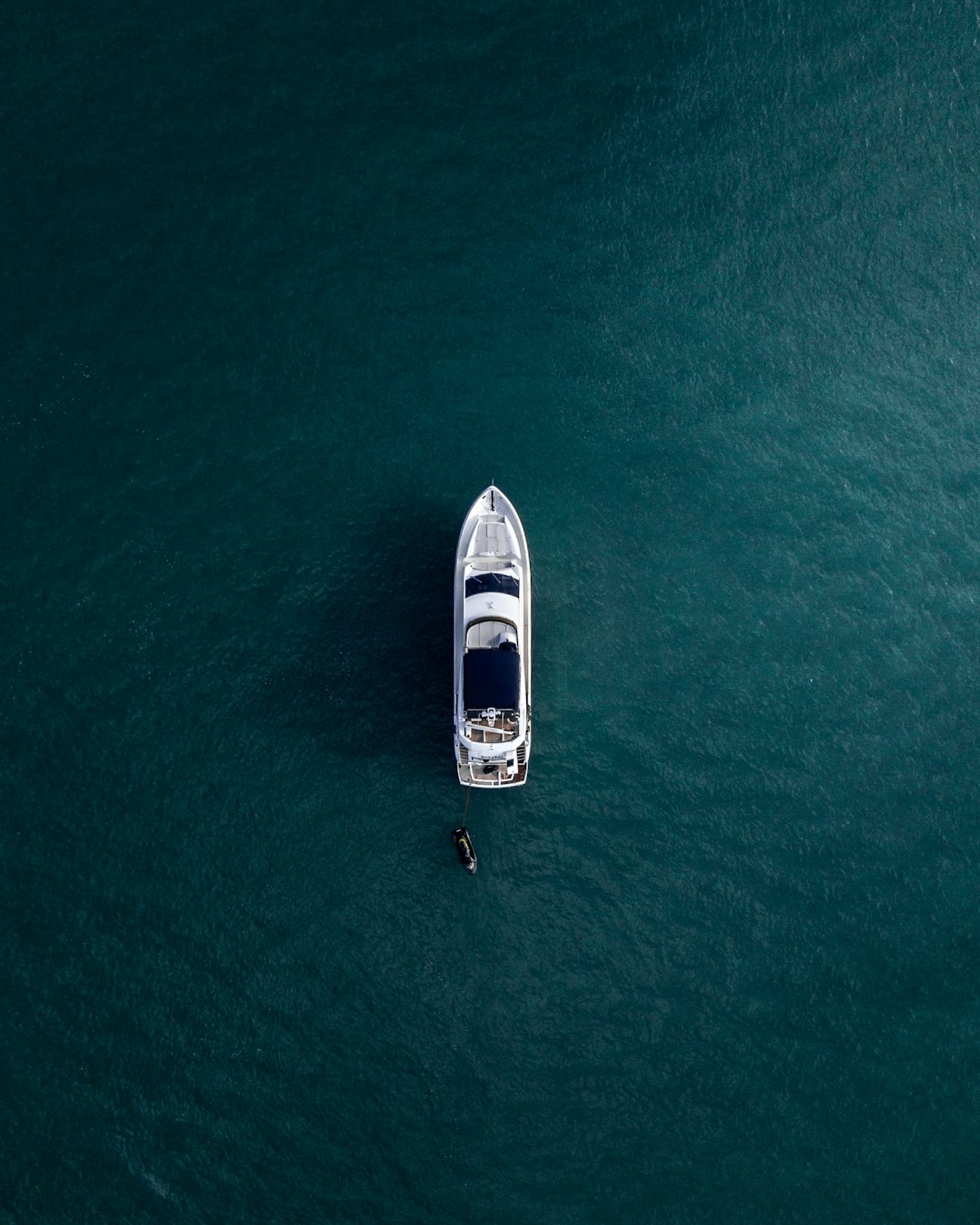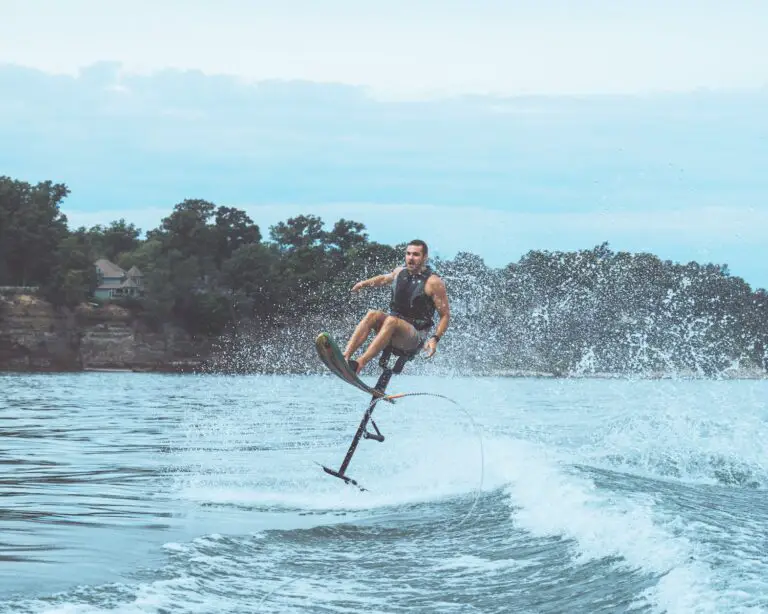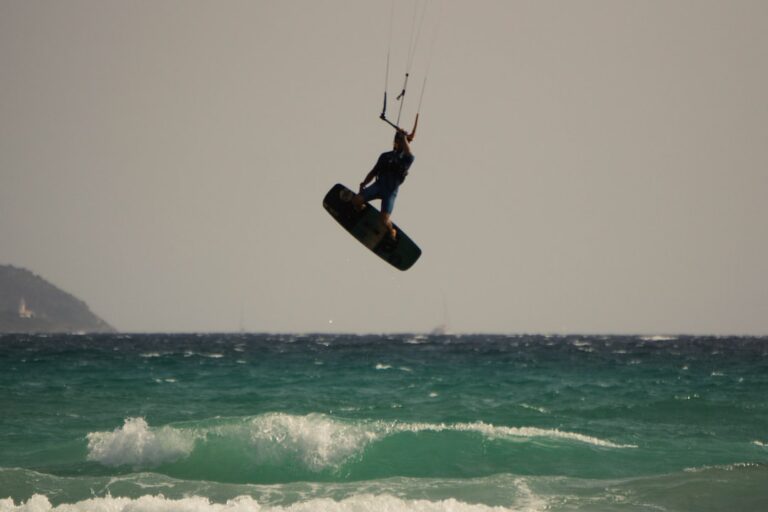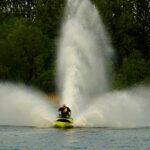Support our hydrofoil educational content for free when you purchase through links on our site. Learn more
7 Epic Tips for Hydrofoil Surfing Behind a Boat in 2025 🚤🏄♂️

Imagine gliding effortlessly above the water’s surface, the boat’s wake barely a ripple beneath your feet, as you carve through the air like a bird in flight. That’s the magic of hydrofoil surfing behind a boat—a sport that’s redefining water thrills in 2025. Whether you’re a wakeboarder craving a fresh challenge or a curious newbie eager to fly, this comprehensive guide from the Hydrofoiling™ team will take you from your first tentative glide to mastering jaw-dropping tricks.
Did you know that hydrofoil surfers can ride at speeds as low as 9 mph, dramatically reducing wake and environmental impact compared to traditional wakeboarding? But here’s the kicker: mastering the balance and timing to lift off the water isn’t as simple as it looks. Stick with us as we unravel the science, gear, best boats, and insider tips to help you soar safely and stylishly behind any boat.
Key Takeaways
- Hydrofoil surfing behind a boat offers a unique flying sensation by lifting the board above water using underwater wings (foils).
- The ideal speed range is 9-15 mph, making it accessible with a variety of boats, including small outboards and electric models.
- Top-rated boards like the Slingshot Hover Glide 72 and Lift Foils eFoil provide excellent options for beginners and pros alike.
- Safety is paramount: always wear a helmet, flotation vest, and use foot straps or hooks on your board.
- Hydrofoil surfing creates smaller wakes and less environmental impact than traditional wake sports.
- Advanced riders can perform tricks like wake jumps, carving turns, and even backflips behind the boat!
Ready to gear up?
- Shop top hydrofoil boards:
Dive in, and get ready to fly above the waves like never before!
Table of Contents
- Quick Tips and Facts About Hydrofoil Surfing Behind a Boat 🏄♂️💨
- The Evolution and Rise of Hydrofoil Surfing Behind Boats: A Splash of History 🌊📜
- How Hydrofoil Surfing Behind a Boat Works: The Science and Mechanics Explained ⚙️🔬
- 1. Top 7 Hydrofoil Boards Perfect for Towing Behind a Boat 🚤🏄♀️
- 2. Best Boats for Hydrofoil Surfing: Wake and Speed Considerations 🚤⚡
- 3. Essential Gear and Safety Equipment for Hydrofoil Surfing Behind Boats 🦺🔧
- 4. Step-by-Step Guide to Getting Started with Hydrofoil Surfing Behind a Boat 🏄♂️🚀
- 5. Common Challenges and How to Overcome Them: Tips from the Pros 💡🔥
- 6. Tricks, Maneuvers, and Advanced Hydrofoil Surfing Techniques Behind Boats 🤙🎯
- Environmental Impact and Sustainability of Hydrofoil Surfing Behind Boats 🌍♻️
- Hydrofoil Surfing vs. Wakeboarding and Wakesurfing: What’s the Difference? 🏄♂️🤔
- Maintenance and Care Tips for Your Hydrofoil Surfing Equipment 🧽🔧
- Community and Events: Where to Connect with Fellow Hydrofoil Surfers 🌐🤝
- Conclusion: Why You Should Try Hydrofoil Surfing Behind a Boat Today! 🚤🌊
- Recommended Links for Hydrofoil Surfing Enthusiasts 🔗📚
- FAQ: Your Burning Questions About Hydrofoil Surfing Behind Boats Answered! ❓🏄♂️
- Reference Links and Resources for Deep Diving Into Hydrofoil Surfing 📖🔍
Quick Tips and Facts About Hydrofoil Surfing Behind a Boat 🏄♂️💨 {#quick-tips-and-facts-about-hydrofoil-surfing-behind-a-boat-🏄♂️💨}
Welcome to the thrilling world of hydrofoil surfing behind a boat! If you’re itching to glide above the water’s surface, feeling like you’re flying on liquid air, you’re in the right place. Here are some quick tips and facts to get you started and keep you stoked:
- ✅ Speed Range: Most riders find the sweet spot between 9 and 15 mph for smooth foiling behind a boat. Too slow? No lift. Too fast? You risk losing control.
- ✅ Boat Types: You don’t need a fancy wake boat! Even a small outboard motorboat or pontoon can work for beginners (source: Mackiteboarding).
- ✅ Equipment: Use a hydrofoil board with a short mast (24”-30”) for better handling in choppy wakes. Foot hooks or straps are a must for control and safety.
- ✅ Safety Gear: Always wear a flotation vest and helmet—hydrofoils are sharp and unforgiving!
- ✅ Learning Curve: Expect to spend some time mastering your balance and weight shifts. Falling is part of the fun, but falling away from the board keeps you safer.
- ✅ Rope Use: Beginners should start with a rope for stability, but advanced riders can toss it and ride the wake freehand.
- ✅ Environmental Impact: Hydrofoils create less wake and disturbance than traditional wakeboards, making them a more eco-friendly choice for lake and river surfing.
Want to dive deeper? Stick around—we’re unpacking everything from gear to tricks, and even the best boats to tow you!
The Evolution and Rise of Hydrofoil Surfing Behind Boats: A Splash of History 🌊📜 {#the-evolution-and-rise-of-hydrofoil-surfing-behind-boats-a-splash-of-history-🌊📜}
Hydrofoil surfing behind boats is a relatively new but rapidly growing water sport that blends the adrenaline of wakeboarding with the futuristic feel of flying above water. Let’s take a quick ride through its history:
- Early Hydrofoils: The concept of hydrofoils dates back to the early 1900s, primarily for boats to reduce drag and increase speed.
- Surf Hydrofoils: In the 1990s, pioneers like Laird Hamilton started experimenting with hydrofoil surfboards, initially in ocean waves.
- Wake Foiling Emerges: Around the 2010s, riders began attaching hydrofoils to wakeboards and towing behind boats, creating a new discipline called wake foiling or hydrofoil surfing behind boats.
- Modern Boom: Thanks to brands like Slingshot, Lift Foils, and Cabrinha, hydrofoil surfing has exploded in popularity, with innovations in board design and foil technology making it accessible to more riders.
- Cultural Impact: Videos like Kai Lenny’s Lake Austin backflip session and Jeff Langley’s beginner tutorials have inspired a new generation of foilers worldwide.
For a more detailed dive into hydrofoil history, check out our Hydrofoil History section.
How Hydrofoil Surfing Behind a Boat Works: The Science and Mechanics Explained ⚙️🔬 {#how-hydrofoil-surfing-behind-a-boat-works-the-science-and-mechanics-explained-⚙️🔬}
Ever wondered how a board can float above water like magic? Here’s the scoop:
The Hydrofoil Principle
A hydrofoil is essentially an underwater wing attached to a mast beneath your board. As the boat pulls you forward:
- Water flows over the foil’s wing, creating lift (similar to how airplane wings work).
- Once lift exceeds your weight, the board rises above the water surface, drastically reducing drag.
- This means you glide smoothly and silently, even at lower speeds compared to traditional wakeboarding.
Key Components
| Component | Function |
|---|---|
| Foil Wing | Generates lift; size affects speed and stability |
| Mast | Connects wing to board; length affects ride height |
| Fuselage | Connects front and rear wings; controls pitch |
| Board | Platform for your feet; size and shape affect control |
Why Behind a Boat?
- The boat provides a consistent pull and wake, allowing you to practice controlled ascents and descents on the foil.
- Unlike ocean foiling, you’re not at the mercy of waves, making it ideal for beginners and tricksters alike.
Want to geek out more? Our Hydrofoil Basics category has you covered.
1. Top 7 Hydrofoil Boards Perfect for Towing Behind a Boat 🚤🏄♀️ {#1-top-7-hydrofoil-boards-perfect-for-towing-behind-a-boat-🚤🏄♀️}
Ready to pick your ride? We rated the top hydrofoil boards for behind-the-boat action based on design, functionality, stability, and beginner-friendliness.
| Board Model | Design (1-10) | Functionality (1-10) | Stability (1-10) | Beginner Friendly (1-10) | Overall Score (1-10) |
|---|---|---|---|---|---|
| Slingshot Hover Glide 72 | 9 | 9 | 8 | 9 | 8.8 |
| Lift Foils eFoil Board | 10 | 10 | 9 | 7 | 8.8 |
| Cabrinha Crosswing | 8 | 8 | 8 | 8 | 8.0 |
| Naish Thrust Foil Board | 8 | 9 | 7 | 7 | 7.8 |
| Liquid Force Hovercraft | 7 | 8 | 7 | 8 | 7.5 |
| Moses Hydrofoil Board | 9 | 9 | 8 | 7 | 8.0 |
| Fanatic Sky SUP Foil Board | 8 | 8 | 9 | 8 | 8.2 |
Slingshot Hover Glide 72
- Design: Sleek and lightweight, perfect for carving wakes.
- Functionality: Comes with adjustable mast options, great for all skill levels.
- Why We Love It: Foot hooks for control and a compact size make it a favorite among Hydrofoiling™ team members.
- Drawbacks: Not ideal for heavy chop or rough water.
Lift Foils eFoil Board
- Design: Electric-powered hydrofoil board for the ultimate freedom.
- Functionality: No boat needed! But can be towed for training.
- Why We Love It: Smooth power delivery and premium build quality.
- Drawbacks: Steeper learning curve and pricier than traditional boards.
Cabrinha Crosswing
- Design: Versatile wingboard that doubles as a kite foil and wake foil.
- Functionality: Great for riders wanting to cross disciplines.
- Why We Love It: Durable and stable with a solid track record.
- Drawbacks: Slightly heavier than competitors.
👉 CHECK PRICE on:
For more hydrofoil board reviews, visit our Hydrofoil Equipment Reviews page.
2. Best Boats for Hydrofoil Surfing: Wake and Speed Considerations 🚤⚡ {#2-best-boats-for-hydrofoil-surfing-wake-and-speed-considerations-🚤⚡}
You might think you need a monster wake boat to get foiling, but the truth is more flexible—and exciting!
What Makes a Good Hydrofoil Towing Boat?
- Consistent Speed Control: Ability to maintain 9-15 mph smoothly.
- Wake Size: For beginners, a smaller wake is better to avoid wild bumps. Advanced riders may prefer bigger wakes for tricks.
- Boat Type:
- Wake Boats: Malibu M240, Mastercraft NXT, Nautique G23 — classic choices with adjustable ballast systems.
- Small Outboards: Boston Whaler 20’, pontoon boats, or even ski boats can work for beginners.
- Electric Boats: Newer electric models like the Pure Watercraft offer quiet, eco-friendly rides.
Boat Comparison Table
| Boat Model | Wake Size | Speed Control | Ideal For Beginners | Eco-Friendly | Notes |
|---|---|---|---|---|---|
| Malibu M240 | Large | Excellent | ❌ | ❌ | Pro-level wake shaping |
| Mastercraft NXT | Medium | Excellent | ✅ | ❌ | Versatile and reliable |
| Boston Whaler 20’ | Small | Good | ✅ | ✅ | Great for learning |
| Pure Watercraft | Small | Good | ✅ | ✅ | Quiet, electric, eco-friendly |
| Generic Pontoon | Small | Fair | ✅ | ✅ | Affordable, slow wake |
Pro Tip from Jeff Langley:
“You don’t need a wake boat to hydrofoil. Almost anything that pulls you works!” (source)
3. Essential Gear and Safety Equipment for Hydrofoil Surfing Behind Boats 🦺🔧 {#3-essential-gear-and-safety-equipment-for-hydrofoil-surfing-behind-boats-🦺🔧}
Safety first, thrill second! Here’s the gear you absolutely need:
- Helmet: A water sports helmet with impact protection is non-negotiable. Hydrofoil blades are sharp!
- Flotation Vest: Choose a vest designed for wake sports, offering buoyancy without restricting movement.
- Wetsuit or Rash Guard: Protects against cold water and scrapes.
- Wake Foil Board with Foot Hooks/Straps: For control and safety during falls.
- Tow Rope: Start with a 50-60 ft rope with a comfortable handle.
- Gloves (Optional): For better grip and hand protection.
Safety Tips
- Always check your equipment before hitting the water.
- Communicate clearly with your boat driver—smooth acceleration is key.
- Practice falling away from the board to avoid injuries.
- Never hydrofoil alone; have a spotter on the boat.
For a full safety checklist, visit our Hydrofoil Basics section.
4. Step-by-Step Guide to Getting Started with Hydrofoil Surfing Behind a Boat 🏄♂️🚀 {#4-step-by-step-guide-to-getting-started-with-hydrofoil-surfing-behind-a-boat-🏄♂️🚀}
Ready to catch your first flight? Here’s how we at Hydrofoiling™ recommend you start:
Step 1: Gear Up and Safety Check
Put on your helmet, vest, and wetsuit. Inspect your board and foil for any damage.
Step 2: Boat Setup
Communicate with your driver to maintain a steady speed around 9-12 mph. Use a rope about 50 feet long.
Step 3: Water Start Position
- Sit or kneel on the board in the water with the foil submerged.
- Place your feet on the board, keeping it perpendicular to the rope.
- Keep your shoulders aligned with your knees, tuck slightly.
Step 4: Signal the Driver
Give a thumbs-up or agreed signal to start pulling smoothly.
Step 5: Getting Up on the Foil
- As the rope tightens, lean slightly forward to keep the foil submerged.
- When you feel lift, shift weight to your back foot to rise above the water.
- Use your front foot to control the foil’s pitch and keep balance.
Step 6: Riding and Steering
- Keep your knees bent and body relaxed.
- Use subtle weight shifts to turn and control height.
- Practice controlled ascents and descents.
Step 7: Falling Safely
- If you lose balance, fall to the side and away from the board.
- Avoid falling forward or backward onto the foil.
Step 8: Progression
- Once comfortable, try riding without the rope, using the boat’s wake alone.
- Experiment with turns and small tricks.
For more detailed tutorials, check out Jeff Langley’s beginner guide on YouTube and our Advanced Hydrofoiling Techniques section.
5. Common Challenges and How to Overcome Them: Tips from the Pros 💡🔥 {#5-common-challenges-and-how-to-overcome-them-tips-from-the-pros-💡🔥}
Hydrofoil surfing behind a boat isn’t all smooth sailing. Here’s what you might face and how to crush it:
Challenge 1: Difficulty Getting Lift
- Cause: Too slow or incorrect weight distribution.
- Fix: Accelerate smoothly to 10-12 mph and push down on your back foot to get the foil to rise.
Challenge 2: Foil Instability or “Porpoising”
- Cause: Improper foil angle or uneven weight shifts.
- Fix: Adjust your front foot pressure to control pitch; keep your body relaxed and centered.
Challenge 3: Fear of Falling
- Cause: New riders often tense up.
- Fix: Practice falling away from the board in shallow water; wear protective gear.
Challenge 4: Choppy Water Conditions
- Cause: Wind or boat wake turbulence.
- Fix: Use a shorter mast (24”) and smaller wings for better control.
Challenge 5: Rope Handling
- Cause: Rope tangling or poor grip.
- Fix: Use gloves and a properly sized rope; keep the handle close but relaxed.
Our Hydrofoiling™ team swears by these tips, and you can find more in our Hydrofoil Equipment Reviews and Hydrofoil Basics categories.
6. Tricks, Maneuvers, and Advanced Hydrofoil Surfing Techniques Behind Boats 🤙🎯 {#6-tricks-maneuvers-and-advanced-hydrofoil-surfing-techniques-behind-boats-🤙🎯}
Once you’ve mastered the basics, it’s time to turn heads with some slick moves! Here’s what our Hydrofoiling™ pros recommend:
Popular Tricks
- Wake Jumps: Use the boat’s wake to launch off the foil, landing smoothly back on the water.
- Carving Turns: Lean into your edges for tight, stylish turns behind the boat.
- Backflips: For the brave and skilled, like Kai Lenny’s legendary Lake Austin backflip. Requires precise speed and control.
- Tossing the Rope: Ride the wake without holding the rope for a freer feel.
Advanced Techniques
- Foil Pumping: Generate speed by shifting weight rhythmically without the boat’s pull (requires calm water).
- Wake-to-Wake Transitions: Move from one wake to another smoothly for continuous riding.
- Switch Riding: Ride with your non-dominant foot forward for versatility.
Training Tips
- Practice on flat water before hitting wakes.
- Record your sessions to analyze form and progress.
- Join local hydrofoil communities for tips and motivation.
Explore our Advanced Hydrofoiling Techniques for step-by-step guides and video tutorials.
Environmental Impact and Sustainability of Hydrofoil Surfing Behind Boats 🌍♻️ {#environmental-impact-and-sustainability-of-hydrofoil-surfing-behind-boats-🌍♻️}
Hydrofoil surfing behind boats isn’t just fun—it’s also a greener way to enjoy water sports!
- Reduced Wake: Hydrofoils create smaller wakes than traditional wakeboards, minimizing shoreline erosion and disturbance to aquatic life.
- Lower Fuel Consumption: Because you can foil at lower speeds, the boat uses less fuel overall.
- Electric Boats: Pairing hydrofoils with electric boats (like Pure Watercraft) slashes emissions and noise pollution.
- Less Water Pollution: Hydrofoils reduce the need for ballast tanks, which can stir up sediments and pollutants.
At Hydrofoiling™, we encourage riders to respect local waterways and practice eco-friendly boating habits. For more on sustainability, check out this article from the Waterkeeper Alliance.
Hydrofoil Surfing vs. Wakeboarding and Wakesurfing: What’s the Difference? 🏄♂️🤔 {#hydrofoil-surfing-vs-wakeboarding-and-wakesurfing-what’s-the-difference-🏄♂️🤔}
Confused about how hydrofoil surfing stacks up against its cousins? Let’s break it down:
| Feature | Hydrofoil Surfing Behind a Boat | Wakeboarding | Wakesurfing |
|---|---|---|---|
| Board Type | Hydrofoil board with underwater wing | Wakeboard (no foil) | Wakesurf board (no foil) |
| Riding Position | Feet strapped or hooked on foil board | Feet strapped on board | Barefoot or strapped |
| Speed Needed | 9-15 mph | 18-25 mph | 10-14 mph |
| Wake Size | Small to medium | Large | Medium |
| Water Contact | Board lifted above water surface | Board on water surface | Board on water surface |
| Learning Curve | Steeper, requires balance | Moderate | Easiest |
| Environmental Impact | Lower wake, less erosion | Higher wake, more erosion | Moderate wake |
Hydrofoil surfing offers a unique flying sensation and is gentler on the environment, but it requires more balance and practice. For more comparisons, visit our Hydrofoil Basics section.
Maintenance and Care Tips for Your Hydrofoil Surfing Equipment 🧽🔧 {#maintenance-and-care-tips-for-your-hydrofoil-surfing-equipment-🧽🔧}
Keep your gear in top shape with these pro tips:
- Rinse After Use: Always rinse your foil and board with fresh water after salt or lake sessions to prevent corrosion.
- Check Bolts and Connections: Tighten all screws and bolts regularly; vibrations can loosen them.
- Inspect Foil Wings: Look for cracks, dings, or chips—repair promptly to avoid performance loss.
- Store Properly: Keep your foil and board in a cool, dry place away from direct sunlight. Use padded bags for transport.
- Lubricate Moving Parts: Use marine-grade lubricant on adjustable foil parts.
Regular maintenance extends the life of your gear and keeps your rides smooth and safe. For detailed guides, see our Hydrofoil Equipment Reviews section.
Community and Events: Where to Connect with Fellow Hydrofoil Surfers 🌐🤝 {#community-and-events-where-to-connect-with-fellow-hydrofoil-surfers-🌐🤝}
Hydrofoil surfing is as much about community as it is about the ride. Here’s where to find your tribe:
- Local Clubs and Meetups: Many lakes and coastal areas have hydrofoil groups. Check Facebook or Meetup for local events.
- Online Forums: Join discussions on Reddit’s r/hydrofoiling or specialized forums like FoilZone.
- Competitions and Festivals: Events like the Wake Foil World Series showcase top talent and offer beginner clinics.
- Workshops and Clinics: Brands like Slingshot and Lift Foils often host training sessions.
- Social Media: Follow pros like Jeff Langley and Kai Lenny for inspiration and tips.
At Hydrofoiling™, we love connecting riders—check out our community page for upcoming events and forums.
Conclusion: Why You Should Try Hydrofoil Surfing Behind a Boat Today! 🚤🌊 {#conclusion-why-you-should-try-hydrofoil-surfing-behind-a-boat-today-🚤🌊}
So, what’s the verdict on hydrofoil surfing behind a boat? After cruising through the history, gear, boats, techniques, and even the environmental perks, it’s clear: this sport is a game-changer. Whether you’re a wakeboarder looking for a new thrill or a complete newbie craving that magical sensation of flying above water, hydrofoil surfing offers a unique blend of adrenaline, grace, and eco-conscious fun.
Our Hydrofoiling™ team loves the Slingshot Hover Glide 72 for its beginner-friendly design and versatility, but the Lift Foils eFoil Board is a jaw-dropping option if you want to ditch the rope altogether and ride powered by an electric motor. Both have their pros and cons, but the takeaway is: there’s a perfect board for every style and skill level.
Positives:
- Smooth, quiet rides with minimal wake
- Accessible with a variety of boats, no need for expensive wake boats
- Expands your water sport horizons with endless progression possibilities
- Environmentally friendlier than traditional wake sports
Negatives:
- Steeper learning curve than wakesurfing or wakeboarding
- Initial investment in quality gear can be significant
- Requires careful safety precautions due to sharp foil blades
If you’re ready to elevate your water game, we confidently recommend giving hydrofoil surfing behind a boat a shot. It’s a ride you won’t forget—and once you fly, you’ll never want to go back to plain old wakeboarding.
Recommended Links for Hydrofoil Surfing Enthusiasts 🔗📚 {#recommended-links-for-hydrofoil-surfing-enthusiasts-🔗📚}
👉 Shop Hydrofoil Boards and Gear:
- Slingshot Hover Glide 72: Amazon | Slingshot Official Website
- Lift Foils eFoil Board: Amazon | Lift Foils Official Website
- Cabrinha Crosswing: Amazon | Cabrinha Official Website
Recommended Books:
- Hydrofoiling: The Complete Guide to Foil Surfing by Mike Doyle — Amazon
- Wakeboarding and Wakesurfing: Techniques and Tips by Jeff Langley — Amazon
- The Science of Hydrofoils by Dr. Sarah Waters — Amazon
FAQ: Your Burning Questions About Hydrofoil Surfing Behind Boats Answered! ❓🏄♂️ {#faq-your-burning-questions-about-hydrofoil-surfing-behind-boats-answered-❓🏄♂️}
What is the best speed for hydrofoil surfing behind a boat?
The ideal speed range is 9 to 15 mph. This range provides enough water flow over the foil wings to generate lift without making the ride unstable or too fast to control. Beginners should start closer to 9-10 mph and gradually increase speed as they gain confidence. Too slow, and the foil won’t lift; too fast, and you risk losing balance or control. Smooth acceleration is key—jerky speed changes can throw you off.
How do I get up and stay up while hydrofoil surfing behind a boat?
Getting up on the foil is all about weight distribution and timing. As the boat pulls you forward:
- Keep the board perpendicular to the rope and your shoulders aligned with your knees.
- Lean slightly forward to keep the foil submerged initially.
- When you feel lift, shift your weight to the back foot to raise the board above water.
- Use your front foot to control the foil’s pitch and maintain balance.
- Keep your knees bent and body relaxed to absorb water movement.
Practice falling safely by falling away from the board and foil to avoid injury. Over time, you’ll develop the muscle memory to stay up longer and ride with finesse.
What are the key differences between hydrofoil surfing and traditional wakeboarding behind a boat?
| Aspect | Hydrofoil Surfing | Traditional Wakeboarding |
|---|---|---|
| Board Type | Hydrofoil board with underwater wing | Wakeboard (flat bottom) |
| Water Contact | Board lifts above water surface | Board stays on water surface |
| Speed Needed | 9-15 mph | 18-25 mph |
| Wake Size | Small to medium | Large wakes required |
| Learning Curve | Steeper, requires balance | Moderate |
| Environmental Impact | Lower wake, less erosion | Larger wake, more shoreline impact |
Hydrofoil surfing offers a smoother, quieter ride with less environmental impact but demands more balance and technique.
What kind of boat and hydrofoil equipment is required for hydrofoil surfing behind a boat?
You don’t need a specialized wake boat to get started. Boats with steady speed control around 9-15 mph and a small to medium wake work best. Examples include:
- Wake boats like Malibu M240 or Mastercraft NXT for advanced riders.
- Small outboard boats like Boston Whaler 20’ or pontoon boats for beginners.
- Electric boats like Pure Watercraft for eco-conscious riders.
Hydrofoil equipment should include:
- A hydrofoil board with a 24”-30” mast and foot hooks or straps.
- A wake-specific front wing sized for your weight and skill level (typically 90-210 sq in).
- Safety gear: helmet, flotation vest, and a suitable tow rope.
Reference Links and Resources for Deep Diving Into Hydrofoil Surfing 📖🔍 {#reference-links-and-resources-for-deep-diving-into-hydrofoil-surfing-📖🔍}
- Slingshot Sports Official Site
- Lift Foils Official Site
- Cabrinha Official Site
- Mackiteboarding Beginner’s Guide to Wake Foiling
- Jeff Langley’s Wake Foil Tutorial – YouTube
- Kai Lenny Foiling Backflips on Lake Austin – YouTube
- Waterkeeper Alliance on Eco-Friendly Boating
Dive in, gear up, and get ready to fly above the waves—hydrofoil surfing behind a boat is waiting for you! 🌊🚤🏄♂️





